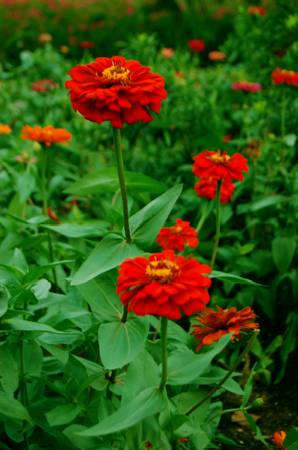Watering Your Plants Wisely
Common sense dictates that plants need water to live. Exactly how much water and how often, though, is a question that baffles many a new gardener. Plants require water to transport nutrients from one part of a plant to another, and too much or too little water can prove fatal to any plant.
Most of us are familiar with the unfortunate outcome when we forget or are too busy to water the gardens or houseplants under our care. The plants begin to wilt, as a result of the soil drying out. Roots can become damaged by severe dehydration and this can cause the plant to die. Interestingly enough, plants that have been over-watered often show the same symptoms. When there is too much water in the soil, air is forced out from the root zone, and the plant roots fail to receive enough oxygen. The roots then rot as a result, making the plant unable to take up water – again resulting in the wilting of its foliage.
How often, then, should plants be watered? Unfortunately for gardeners, there is no rule to dictate the amount and frequency of water to give plants. Each plant has different moisture needs, which all gardeners should take the effort to understand. For instance, plants with fine root systems or that naturally grow in wet soil conditions (e.g. bog plants like the Venus Fly Trap) prefer their roots to be kept moist at all times. Such plants will die if the soil turns dry. On the other hand, there are also plants that prefer the soil to dry out a little between each watering. This applies to many tropical houseplant species. Cacti and succulents are best adapted to dry soil conditions, and will rot and die if given too much water.
The easiest way for a novice gardener to gauge whether the plant needs water is to use the ‘finger test’. This is carried out by using a finger to feel the moisture content of the soil down to about an inch below the soil surface. Another method is by simply lifting up the plant pots regularly. A lighter pot would mean that water has been lost, and that the plant inside it needs watering. Gardeners should never rely only on the colour of the soil surface to gauge when water is needed, as water evaporates fastest there.
To gauge how much water to use each time you water a potted plant, simply water it until excess water runs out from the pot’s drainage holes. This way, you will supply enough water to moisten the entire soil volume, and to leach excess soluble fertiliser salts out of the root zone. With sufficient practice, watering your plants will be a consistent process of giving them life and health – instead of a hit-and-miss exercise that might bring them to an early demise.
By Jean Ang, Pearl Ho & Wilson Wong

Plants that are grown in a sunny or windy location need more frequent watering. This is to compensate for water loss due to the increased rate of evaporation and transpiration. Zinnias, shown here, are annuals that thrive in sunny areas: to grow well, they need to be watered twice daily on hot days.

Plants have very different water needs. Cacti (left) thrive in dry soil conditions, and will rot and die if given too much water. Venus Fly Trap (centre) grows naturally in wet soil conditions, and so its roots should be kept moist at all times. Rosemary (right) prefers the soil to dry out a little between each watering.

Use the finger test to gauge whether the plant needs water by inserting a finger to around an inch below the soil surface, to feel the moisture content of the soil.

Plants grown in terracotta pots need to be watered more frequently than those in plastic pots, as terracotta is a porous material, meaning that water can also be lost through the sides of the pot

Soil volume affects the amount of water that is stored in the root zone. A small plant grown in a large pot requires less frequent watering than one that is potted up in a smaller container under the same environmental conditions.

Different soil mixes require different watering schedules. Soil that contains a larger proportion of organic matter, such as peat and compost (shown on the left) is able to hold more moisture than soil that contains more sand (shown on the right).
Have views or comments on this article? Let us know via this form. If you would like to give us feedback on any other areas relating to our parks and gardens, please submit via https://www.nparks.gov.sg/feedback



Dennis Ba 12/16/2013 11:51:11 PM